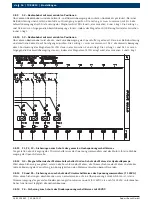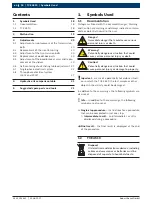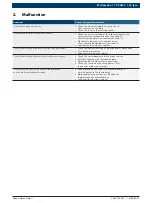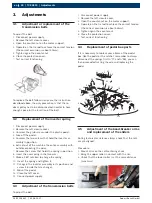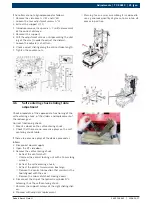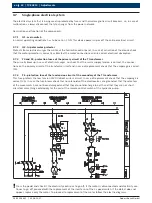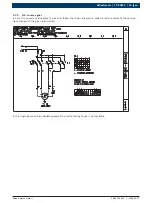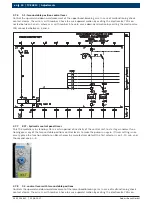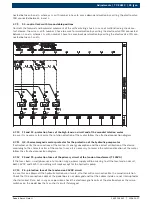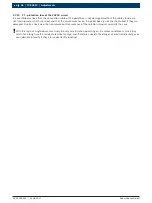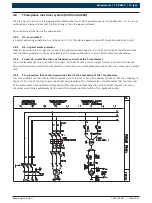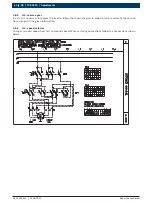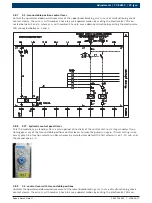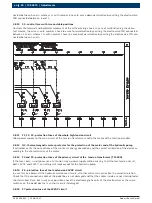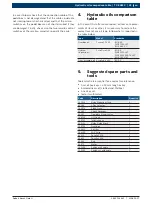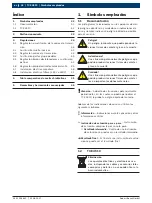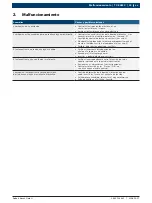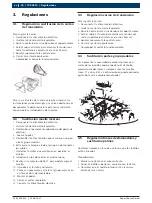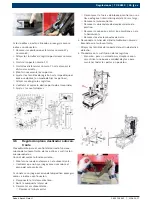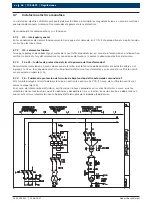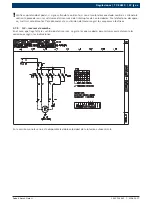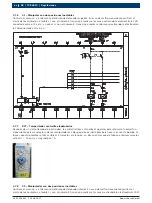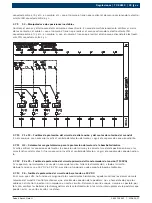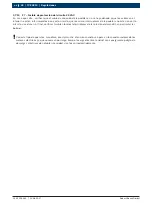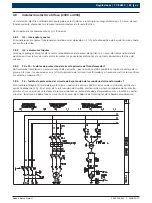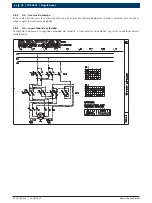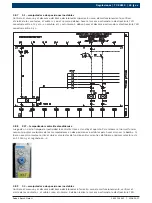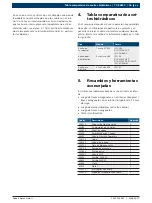
1 695 104 941
2008-10-17
|
Robert Bosch GmbH
30 | TCE 4510 | Adjustments
en
nected between 5 and L-, whereas L+ with number 6 have to cause downward motion by exciting the electrovalve
Y3B connected between 6 and L-.
S3 - control lever with two unstable positions
3.8.10
Controls the forward and backward movement of the self-centering chuck. In case of malfunctioning check con-
tact closure, the wire L+ with number 2 have to cause forward motion by exciting the electrovalve Y1B connected
between 2 and L-, whereas L+ with number 1 have to cause backward motion by exciting the electrovalve Y1N con-
nected between 1 and L-.
F1, F2, F3 - protection fuses of the whole high-tension circuit
3.8.11
Allow power supply to the main circuit of the tension transformer and to the motor of the rotation mandrel.
Q3 - thermal-magnetic motor protector for the protection of the motor and of the hydraulic pump
3.8.12
If activated, verify the connections of the motor, its energy absorption and the correct calibration of the device ac-
cording to the characteristics of the motor.
F4 and F5 - protection fuses of the primary circuit of the tension transformer (T 100VA)
3.8.13
If the fuses burn, usually because of a tension surge, power supply will be missing to all the low-tension circuit,
both 24VDC and 24VAC, so nothing will work except for the hydraulic pump.
F6 - protection fuse of the low-tension 24VDC circuit
3.8.14
In case this one blows all the hydraulic motion won’t work, all other will remain active like the mandrel rotation.
Check that the connection cable of the pedal box is not damaged and that the cables inside are not interrupted or
short-circuited. Rare, but in any case possible, check the electromagnetic coils of the electrovalves or the micro
switches on the pedal box that can short-circuit if damaged.
F7 protection fuse of the 24VAC circuit
3.8.15

